FGA25N120 IGBT: Application, Datasheet, Pinout
IGBT 1200V 50A 313W TO3P
The FGA25N120 is a high voltage and high current IGBT with NPT Trench Technology. This article will unlock more details about FGA25N120. And more, huge range of Semiconductors, Capacitors, Resistors and ICs in stock. Welcome RFQ.

1200 В 50A FGA25N120
FGA25N120 Pinout

FGA25N120 Pinout
| Pin Number | Pin Name | Description |
| 1 | Gate | Controls the biasing of the IGBT |
| 2 | Collector | Current flows in through Source |
| 3 | Emitter | Current flows out through Emitter |
Pin Description
FGA25N120 CAD Model
Symbol
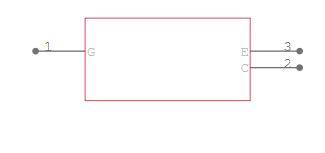
FGA25N120 Symbol
Footprint

FGA25N120 Footprint
3D Model
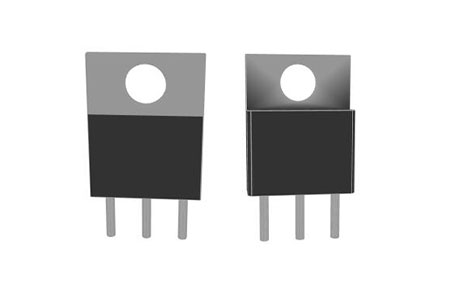
FGA25N120 3D Model
FGA25N120 Description
The FGA25N120 is a high voltage and high current IGBT with NPT Trench Technology. The IGBT can switch 1200V with a current rating of up to 50A. It also has a very low gate saturation voltage of 2V allowing it to be used in low voltage driver side designs.
Specifications
- TypeParameter
- Mount
In electronic components, the term "Mount" typically refers to the method or process of physically attaching or fixing a component onto a circuit board or other electronic device. This can involve soldering, adhesive bonding, or other techniques to secure the component in place. The mounting process is crucial for ensuring proper electrical connections and mechanical stability within the electronic system. Different components may have specific mounting requirements based on their size, shape, and function, and manufacturers provide guidelines for proper mounting procedures to ensure optimal performance and reliability of the electronic device.
Through Hole - Mounting Type
The "Mounting Type" in electronic components refers to the method used to attach or connect a component to a circuit board or other substrate, such as through-hole, surface-mount, or panel mount.
Through Hole - Package / Case
refers to the protective housing that encases an electronic component, providing mechanical support, electrical connections, and thermal management.
TO-3P-3, SC-65-3 - Number of Pins3
- Collector-Emitter Breakdown Voltage1.2kV
- Test Conditions600V, 25A, 15 Ω, 15V
- Turn Off Delay Time
It is the time from when Vgs drops below 90% of the gate drive voltage to when the drain current drops below 90% of the load current. It is the delay before current starts to transition in the load, and depends on Rg. Ciss.
210 ns - Operating Temperature
The operating temperature is the range of ambient temperature within which a power supply, or any other electrical equipment, operate in. This ranges from a minimum operating temperature, to a peak or maximum operating temperature, outside which, the power supply may fail.
-55°C~150°C TJ - Packaging
Semiconductor package is a carrier / shell used to contain and cover one or more semiconductor components or integrated circuits. The material of the shell can be metal, plastic, glass or ceramic.
Tube - Part Status
Parts can have many statuses as they progress through the configuration, analysis, review, and approval stages.
Obsolete - Moisture Sensitivity Level (MSL)
Moisture Sensitivity Level (MSL) is a standardized rating that indicates the susceptibility of electronic components, particularly semiconductors, to moisture-induced damage during storage and the soldering process, defining the allowable exposure time to ambient conditions before they require special handling or baking to prevent failures
1 (Unlimited) - Max Power Dissipation
The maximum power that the MOSFET can dissipate continuously under the specified thermal conditions.
313W - Element Configuration
The distribution of electrons of an atom or molecule (or other physical structure) in atomic or molecular orbitals.
Single - Input Type
Input type in electronic components refers to the classification of the signal or data that a component can accept for processing or conversion. It indicates whether the input is analog, digital, or a specific format such as TTL or CMOS. Understanding input type is crucial for ensuring compatibility between different electronic devices and circuits, as it determines how signals are interpreted and interacted with.
Standard - Turn On Delay Time
Turn-on delay, td(on), is the time taken to charge the input capacitance of the device before drain current conduction can start.
48 ns - Power - Max
Power - Max is a parameter that specifies the maximum amount of power that an electronic component can handle without being damaged. It is typically measured in watts and indicates the upper limit of power that can be safely supplied to the component. Exceeding the maximum power rating can lead to overheating, malfunction, or permanent damage to the component. It is important to consider the power-max rating when designing circuits or systems to ensure proper operation and longevity of the electronic components.
313W - Collector Emitter Voltage (VCEO)
Collector-Emitter Voltage (VCEO) is a key parameter in electronic components, particularly in transistors. It refers to the maximum voltage that can be applied between the collector and emitter terminals of a transistor while the base terminal is open or not conducting. Exceeding this voltage limit can lead to breakdown and potential damage to the transistor. VCEO is crucial for ensuring the safe and reliable operation of the transistor within its specified limits. Designers must carefully consider VCEO when selecting transistors for a circuit to prevent overvoltage conditions that could compromise the performance and longevity of the component.
1.2kV - Max Collector Current
Max Collector Current is a parameter used to specify the maximum amount of current that can safely flow through the collector terminal of a transistor or other electronic component without causing damage. It is typically expressed in units of amperes (A) and is an important consideration when designing circuits to ensure that the component operates within its safe operating limits. Exceeding the specified max collector current can lead to overheating, degradation of performance, or even permanent damage to the component. Designers must carefully consider this parameter when selecting components and designing circuits to ensure reliable and safe operation.
50A - Reverse Recovery Time
Reverse Recovery Time is a key parameter in semiconductor devices, particularly diodes and transistors. It refers to the time taken for a diode or transistor to switch from conducting in the forward direction to blocking in the reverse direction when the polarity of the voltage across the device is reversed. This parameter is crucial in applications where fast switching speeds are required, as a shorter reverse recovery time allows for quicker response times and improved efficiency. Reverse Recovery Time is typically specified in datasheets for electronic components and is an important consideration in circuit design to ensure optimal performance and reliability.
770 ns - Voltage - Collector Emitter Breakdown (Max)
Voltage - Collector Emitter Breakdown (Max) is a parameter that specifies the maximum voltage that can be applied between the collector and emitter terminals of a transistor or other semiconductor device before it breaks down and allows excessive current to flow. This parameter is crucial for ensuring the safe and reliable operation of the component within its specified limits. Exceeding the maximum breakdown voltage can lead to permanent damage or failure of the device. Designers and engineers must carefully consider this parameter when selecting components for their circuits to prevent potential issues and ensure proper functionality.
1200V - Vce(on) (Max) @ Vge, Ic
The parameter "Vce(on) (Max) @ Vge, Ic" in electronic components refers to the maximum voltage drop across the collector-emitter junction of a power transistor when it is in the on-state. This parameter is specified at a certain gate-emitter voltage (Vge) and collector current (Ic). It indicates the maximum voltage that can be sustained across the collector-emitter terminals while the transistor is conducting current. This parameter is important for determining the power dissipation and efficiency of the transistor in a circuit, as well as for ensuring proper operation and reliability of the component.
2V @ 15V, 25A - IGBT Type
IGBT Type refers to the specific classification of Insulated Gate Bipolar Transistors, which are semiconductor devices used for switching and amplifying electronic signals. IGBT types can vary based on their voltage ratings, current handling capabilities, switching speeds, and packaging configurations. Different IGBT types are designed to optimize performance in various applications, including motor drives, power inverters, and high-frequency switching circuits. Understanding the IGBT type is crucial for selecting the appropriate component for a particular electronic design or application.
Trench Field Stop - Gate Charge
the amount of charge that needs to be injected into the gate electrode to turn ON (drive) the MOSFET.
160nC - Current - Collector Pulsed (Icm)
The parameter "Current - Collector Pulsed (Icm)" in electronic components refers to the maximum allowable collector current that the component can handle when operating in a pulsed mode. This parameter is crucial for devices such as transistors and power amplifiers that may experience short bursts of high current during operation. Exceeding the specified Icm rating can lead to overheating, device failure, or even permanent damage. Designers must carefully consider this parameter when selecting components to ensure reliable and safe operation within the specified limits.
75A - Td (on/off) @ 25°C
The parameter "Td (on/off) @ 25°C" in electronic components refers to the thermal resistance between the device junction and the ambient environment when the device is in the on or off state at a temperature of 25°C. This parameter helps to quantify how efficiently the device can dissipate heat generated during operation. A lower thermal resistance value indicates better heat dissipation capabilities, which is crucial for maintaining the device's performance and reliability. Designers use this parameter to ensure proper thermal management and prevent overheating issues that can affect the component's functionality and lifespan.
48ns/210ns - Switching Energy
Switching energy is a parameter used to describe the amount of energy consumed by an electronic component during the process of switching from one state to another. It is typically measured in joules and is an important consideration in the design and evaluation of electronic devices, especially in terms of power efficiency and heat generation. Switching energy is influenced by factors such as the operating frequency, voltage levels, and the specific characteristics of the component itself. Minimizing switching energy is crucial for improving the overall performance and reliability of electronic systems.
340μJ (on), 900μJ (off) - Radiation Hardening
Radiation hardening is the process of making electronic components and circuits resistant to damage or malfunction caused by high levels of ionizing radiation, especially for environments in outer space (especially beyond the low Earth orbit), around nuclear reactors and particle accelerators, or during nuclear accidents or nuclear warfare.
No - RoHS Status
RoHS means “Restriction of Certain Hazardous Substances” in the “Hazardous Substances Directive” in electrical and electronic equipment.
RoHS Compliant - Lead Free
Lead Free is a term used to describe electronic components that do not contain lead as part of their composition. Lead is a toxic material that can have harmful effects on human health and the environment, so the electronics industry has been moving towards lead-free components to reduce these risks. Lead-free components are typically made using alternative materials such as silver, copper, and tin. Manufacturers must comply with regulations such as the Restriction of Hazardous Substances (RoHS) directive to ensure that their products are lead-free and environmentally friendly.
Lead Free
Parts with Similar Specs
- ImagePart NumberManufacturerMountPackage / CaseCollector Emitter Breakdown VoltageVoltage - Collector Emitter Breakdown (Max)Max Collector CurrentMax Power DissipationReverse Recovery TimeMoisture Sensitivity Level (MSL)View Compare
FGA25N120FTD
Through Hole
TO-3P-3, SC-65-3
1.2 kV
1200V
50 A
313 W
770 ns
1 (Unlimited)
Through Hole
TO-247-3
1.2 kV
1200V
50 A
180 W
105 ns
1 (Unlimited)
Through Hole
TO-247-3
1.2 kV
1200V
50 A
385 W
154 ns
1 (Unlimited)
Through Hole
TO-247-3
1.2 kV
1200V
50 A
190 W
200 ns
1 (Unlimited)
-
TO-247-3
-
1200V
-
-
290ns
1 (Unlimited)
FGA25N120 Features
High Voltage High Current IGBT with a low saturation voltage
Collector-Emitter Voltage (VCE): 1200V
Collector Current (IC): 50A @25°C
The Minimum Gate threshold voltage (VGE) is 3.5V
The maximum Gate threshold voltage (VGE) is 7.5V
Gate-Emitter Voltage is (VGE) is ±20V (max)
Rise time and the fall time is about 60ns and 100ns respectively.
Available in To-3P package
FGA25N120 Applications
High Voltage, high current switching device
Induction Heating
Microwave Oven
Large Solenoids
Tesla Coils
Converters or Inverter circuits
FGA25N120 Alternatives
The alternate for FGA25N120:
FGA15N120, TA49123, FGA180N33.
Where to use FGA25N120
The FGA25N120 is a high voltage, high current IGBT that can switch high voltages up to 1200V while delivering a current of 50A at 25°C. It can also withstand strong pulse currents of up to 90A, making it ideal for applications involving high voltage and switching current spikes.
Because the IGBT employs Non-Punch Through (NPT) Technology, it has a low switching loss and low saturation voltage, allowing it to be employed in low voltage switching driver designs with a high switching efficiency. In comparison to MOSFETs, the FGA25N, like all IGBTs, has a slow switching speed and a significant voltage drop across the collector and emitter. If your design calls for a high-efficiency, fast-switching device, MOSFETs should be chosen over IGBTs. In designs with high switching voltage and current, IGBTs are preferred.
How to use FGA25N120
The pin-out of an IGBT shows that it is a hybrid of MOSFET and BJT. On the input side, it's comparable to a MOSFET, and on the output side, it's similar to a BJT, with Collector and Emitter. This means that an IGBT is simply a MOSFET with a BJT on the output side to take advantage of the advantages of both a MOSFET and a BJT.
In the same way that the gate pin of a MOSFET must be triggered with the minimum gate voltage to close the switch, the gate pin of an IGBT must be triggered with the minimum gate voltage to close the switch. The needed gate trigger voltage can be estimated using the collector-emitter voltage and collector current that must be switched, using the graph in the datasheet shown below.
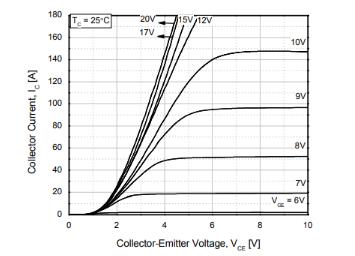
How to use FGA25N120
Like a MOSFET, once the gate is triggered, the IGBT will stay on even if the trigger voltage is withdrawn. This is because the input gate pin of an IGBT has a gate capacitance. To switch off the device, just connect the gate pin of the IGBT to the ground to discharge the gate capacitance. As a result, the Gate pin of an IGBT is usually linked to the ground through a 10k pull-down resistor or a gate driver IC such as the IR2104.
When using IGBTs in switching circuits, it's important to avoid using them in high-frequency designs since the IGBT's collector-emitter voltage drop (switching loss) increases as the switching frequency rises. In the datasheet, you'll find a graph for the same.
FGA25N120 Package
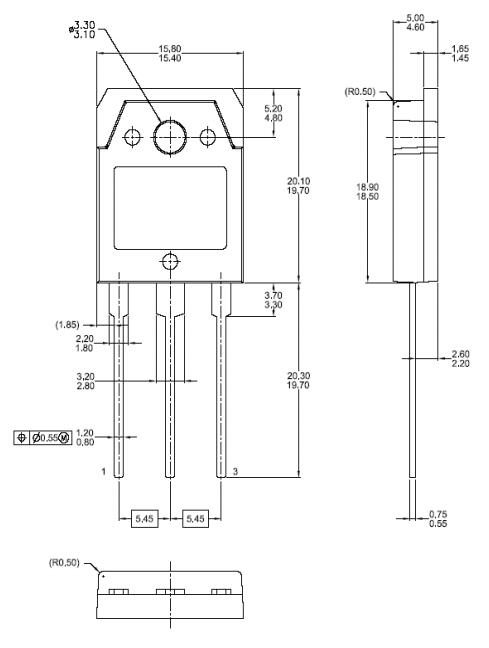
FGA25N120 Package
FGA25N120 Manufacturer
On Semiconductor (Nasdaq: ON) is a manufacturer engaging itself in reducing energy use. It features a comprehensive portfolio of power, signal management, and logic, custom solutions that are energy efficient. It acts as a world-class supply chain with high reliability and a network of manufacturing facilities, sales, offices, and design centres in key markets through North America, Europe, and the Asia Pacific regions.
Datasheet PDF
- Datasheets :
- ReachStatement :
- PCN Obsolescence/ EOL :
What is FGA25N120?
The FGA25N120 is a high voltage and high current IGBT with NPT Trench Technology. The IGBT can switch 1200V with a current rating of up to 50A. It also has a very low gate saturation voltage of 2V allowing it to be used in low voltage driver side designs.
What package is FGA25N120 available in?
It is available in the To-3P package.
What is FGA25N120 designed ?
This device is designed for induction heating and microwave oven.
 An Overview of the 5962-8776303LX Digital to Analog Converter (DAC)
An Overview of the 5962-8776303LX Digital to Analog Converter (DAC)06 March 202474
 2N5458 JFET: Alternatives, Datasheet, Pinout
2N5458 JFET: Alternatives, Datasheet, Pinout07 October 20217444
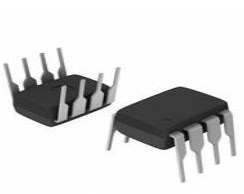 DS1620 Thermometer/Thermostat: Pinout, Datasheet and Applications
DS1620 Thermometer/Thermostat: Pinout, Datasheet and Applications17 April 20252891
![S9014 Transistor: Pinout, Datasheet and Circuit [Video&FAQ]](https://res.utmel.com/Images/Article/b4d58d10-6f12-40f3-a348-8439a1be6520.png) S9014 Transistor: Pinout, Datasheet and Circuit [Video&FAQ]
S9014 Transistor: Pinout, Datasheet and Circuit [Video&FAQ]28 September 202138960
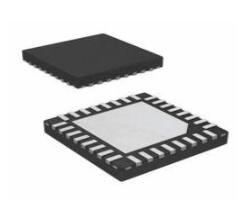 What is LM5119PSQX/NOPB Dual Synchronous Buck Controller?
What is LM5119PSQX/NOPB Dual Synchronous Buck Controller?24 March 2022193
 IRF9640 P-Channel MOSFET: Pinout, Datasheet, Equivalent, and Circuit
IRF9640 P-Channel MOSFET: Pinout, Datasheet, Equivalent, and Circuit01 September 20216970
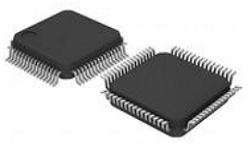 STM32L431RCT6 Microcontroller: Features, Applications and Datasheet
STM32L431RCT6 Microcontroller: Features, Applications and Datasheet13 November 20231803
 Introduction to MSP430G2x11 and MSP430G2x01 Mixed-Signal Microcontrollers
Introduction to MSP430G2x11 and MSP430G2x01 Mixed-Signal Microcontrollers29 February 202490
 Applications of Sensors on CNC Machine Tools
Applications of Sensors on CNC Machine Tools13 September 202118202
 Explain in Detail the Three Sharp Weapons to Eliminate EMC: Capacitors/Inductors/Magnetic Beads
Explain in Detail the Three Sharp Weapons to Eliminate EMC: Capacitors/Inductors/Magnetic Beads24 December 20213012
 Millimeter Wave Radar: Advantages, Types, and Applications
Millimeter Wave Radar: Advantages, Types, and Applications18 October 202118543
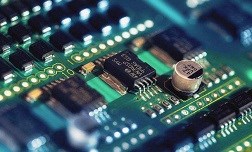 What is Surge?
What is Surge?09 February 20225851
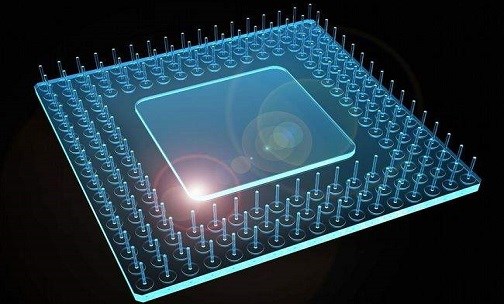 Semiconductor Equipment Industry Research
Semiconductor Equipment Industry Research25 March 20244269
 What is a Fixed Inductor?
What is a Fixed Inductor?15 April 202111005
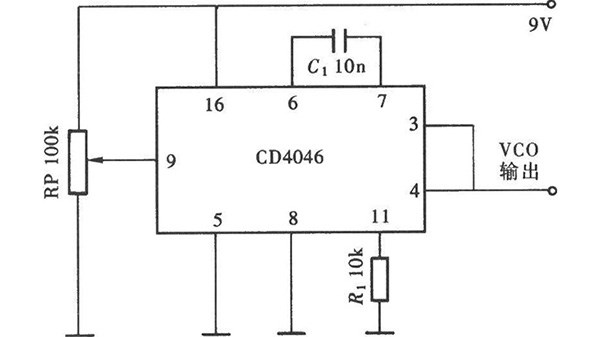 What is a Voltage Controlled Oscillator?
What is a Voltage Controlled Oscillator?08 October 20206738
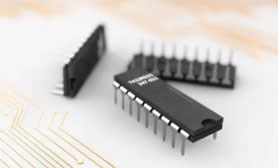 What is SPI (Serial Perripheral Interface)?
What is SPI (Serial Perripheral Interface)?25 November 20213890
ON Semiconductor
In Stock: 30
United States
China
Canada
Japan
Russia
Germany
United Kingdom
Singapore
Italy
Hong Kong(China)
Taiwan(China)
France
Korea
Mexico
Netherlands
Malaysia
Austria
Spain
Switzerland
Poland
Thailand
Vietnam
India
United Arab Emirates
Afghanistan
Åland Islands
Albania
Algeria
American Samoa
Andorra
Angola
Anguilla
Antigua & Barbuda
Argentina
Armenia
Aruba
Australia
Azerbaijan
Bahamas
Bahrain
Bangladesh
Barbados
Belarus
Belgium
Belize
Benin
Bermuda
Bhutan
Bolivia
Bonaire, Sint Eustatius and Saba
Bosnia & Herzegovina
Botswana
Brazil
British Indian Ocean Territory
British Virgin Islands
Brunei
Bulgaria
Burkina Faso
Burundi
Cabo Verde
Cambodia
Cameroon
Cayman Islands
Central African Republic
Chad
Chile
Christmas Island
Cocos (Keeling) Islands
Colombia
Comoros
Congo
Congo (DRC)
Cook Islands
Costa Rica
Côte d’Ivoire
Croatia
Cuba
Curaçao
Cyprus
Czechia
Denmark
Djibouti
Dominica
Dominican Republic
Ecuador
Egypt
El Salvador
Equatorial Guinea
Eritrea
Estonia
Eswatini
Ethiopia
Falkland Islands
Faroe Islands
Fiji
Finland
French Guiana
French Polynesia
Gabon
Gambia
Georgia
Ghana
Gibraltar
Greece
Greenland
Grenada
Guadeloupe
Guam
Guatemala
Guernsey
Guinea
Guinea-Bissau
Guyana
Haiti
Honduras
Hungary
Iceland
Indonesia
Iran
Iraq
Ireland
Isle of Man
Israel
Jamaica
Jersey
Jordan
Kazakhstan
Kenya
Kiribati
Kosovo
Kuwait
Kyrgyzstan
Laos
Latvia
Lebanon
Lesotho
Liberia
Libya
Liechtenstein
Lithuania
Luxembourg
Macao(China)
Madagascar
Malawi
Maldives
Mali
Malta
Marshall Islands
Martinique
Mauritania
Mauritius
Mayotte
Micronesia
Moldova
Monaco
Mongolia
Montenegro
Montserrat
Morocco
Mozambique
Myanmar
Namibia
Nauru
Nepal
New Caledonia
New Zealand
Nicaragua
Niger
Nigeria
Niue
Norfolk Island
North Korea
North Macedonia
Northern Mariana Islands
Norway
Oman
Pakistan
Palau
Palestinian Authority
Panama
Papua New Guinea
Paraguay
Peru
Philippines
Pitcairn Islands
Portugal
Puerto Rico
Qatar
Réunion
Romania
Rwanda
Samoa
San Marino
São Tomé & Príncipe
Saudi Arabia
Senegal
Serbia
Seychelles
Sierra Leone
Sint Maarten
Slovakia
Slovenia
Solomon Islands
Somalia
South Africa
South Sudan
Sri Lanka
St Helena, Ascension, Tristan da Cunha
St. Barthélemy
St. Kitts & Nevis
St. Lucia
St. Martin
St. Pierre & Miquelon
St. Vincent & Grenadines
Sudan
Suriname
Svalbard & Jan Mayen
Sweden
Syria
Tajikistan
Tanzania
Timor-Leste
Togo
Tokelau
Tonga
Trinidad & Tobago
Tunisia
Turkey
Turkmenistan
Turks & Caicos Islands
Tuvalu
U.S. Outlying Islands
U.S. Virgin Islands
Uganda
Ukraine
Uruguay
Uzbekistan
Vanuatu
Vatican City
Venezuela
Wallis & Futuna
Yemen
Zambia
Zimbabwe














